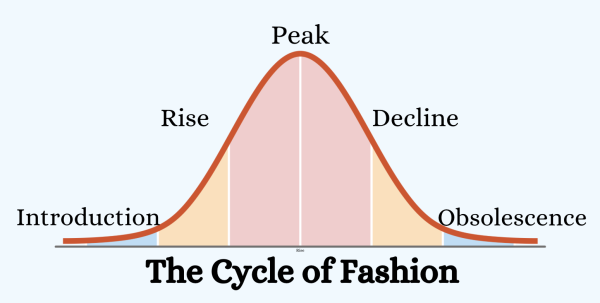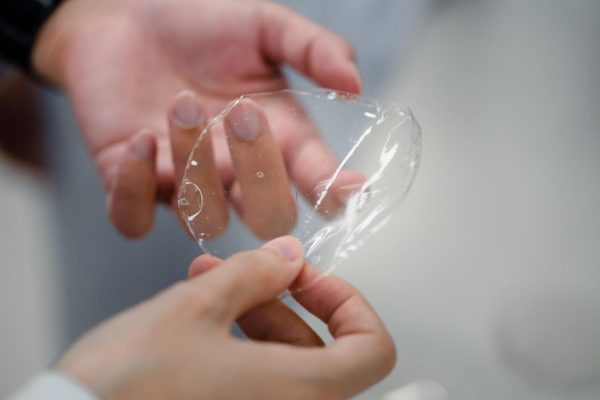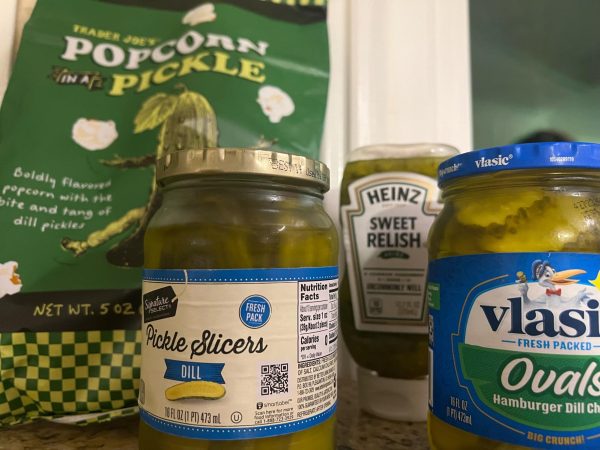Where Does Trash Go?

Recyclable items will be dumped into landfills if they are bagged. Make sure to keep your recyclable items loose and clean!
March 14, 2022
Trash is an epidemic. Looking at the US as a whole, the Environmental Protection Agency estimates that the average American produces 4.9 pounds of trash per day. On an anecdotal level, it’s not hard to miss abandoned lunches and milk cartons on tables at the end of break and lunch or the plastic debris flying by the quad on gusts of wind. We find ways to get rid of trash, and Americans can do so through avenues with varying environmental impacts: recycling, composting, incinerating, or land disposal.
The most common method of waste-management is land disposal. Here, solid waste is dumped into a sanitary landfill – essentially a hole dug into the ground for trash to be placed in. Critically, though, sanitary landfills are lined with compact clay and impermeable liners to avoid toxins from the waste seeping through the soil into underlying groundwater.
Another method, trash incineration, burns your trash instead, effectively reducing the weight and volume of solid waste compared to land disposal. Trash is burned in a massive furnace under carefully controlled circumstances to minimize air pollution, greenhouse gas emissions, and toxins released into the air, with fabric baghouse filters, acid gas scrubbers, and electrostatic precipitators extensively filtering the incinerator airstream. Trash residue left at the bottom of the furnace (bottom ash) and ultra-concentrated ash produced from combustion (fly ash) is collected by waste trucks and delivered to hazardous waste landfills to be disposed of.
Interestingly enough, burning trash can light your home. Hot gases produced from burning trash float from the furnace to a separate chamber, where it boils water into steam. The steam moves through tubes to a turbine and generator, which produces electricity that can be sold to power plants.
The next method of solid-waste management is recycling – the conversion of solid-waste into new products. For example, a used recyclable product like an old aluminum can may be melted down to make a new can. Recycling helps keep much waste out of landfills and reduces the need to collect more raw materials (like through logging, extracting, or mining, which are environmentally damaging).
“The best part about recycling is being able to reduce harm to the environment,” says Mrs. Pilkenton (Staff), an AP Environmental Science teacher. “And while it’s part of the three R’s – reduce, reuse, recycle – we want to prioritize reducing and reusing so that we can prevent our trash from entering the waste-stream in the first place.”
Recycling helps the environment, but not everything can be recycled. According to Mrs. Pilkenton, “Only plastic with the recycle triangles 1 and 2 can be recycled.” She adds, “Most importantly, your recyclable items can’t be bagged and dumped in the bin. They must be clean and out of a plastic trash bag.”
The final major method of waste management is composting, a process in which the organic portion of trash is allowed to decompose. Bacteria and other organisms digest organic waste, leaving behind a material called humus that is effective as potting fertilizer and supports the growth of plants. Composting can be done at home, with the Environmental Protection Agency providing an easy guide online, allowing Mustangs to play their own part in being able to protect the environment.












































